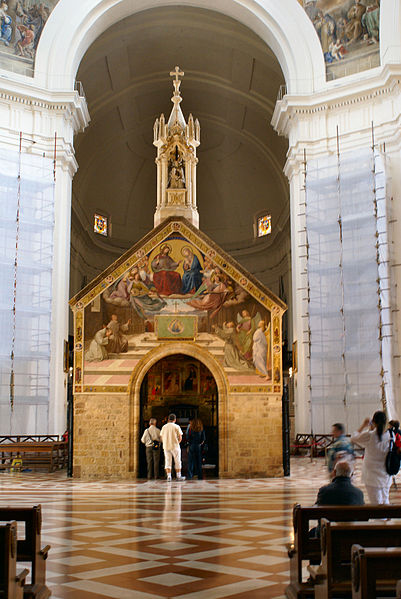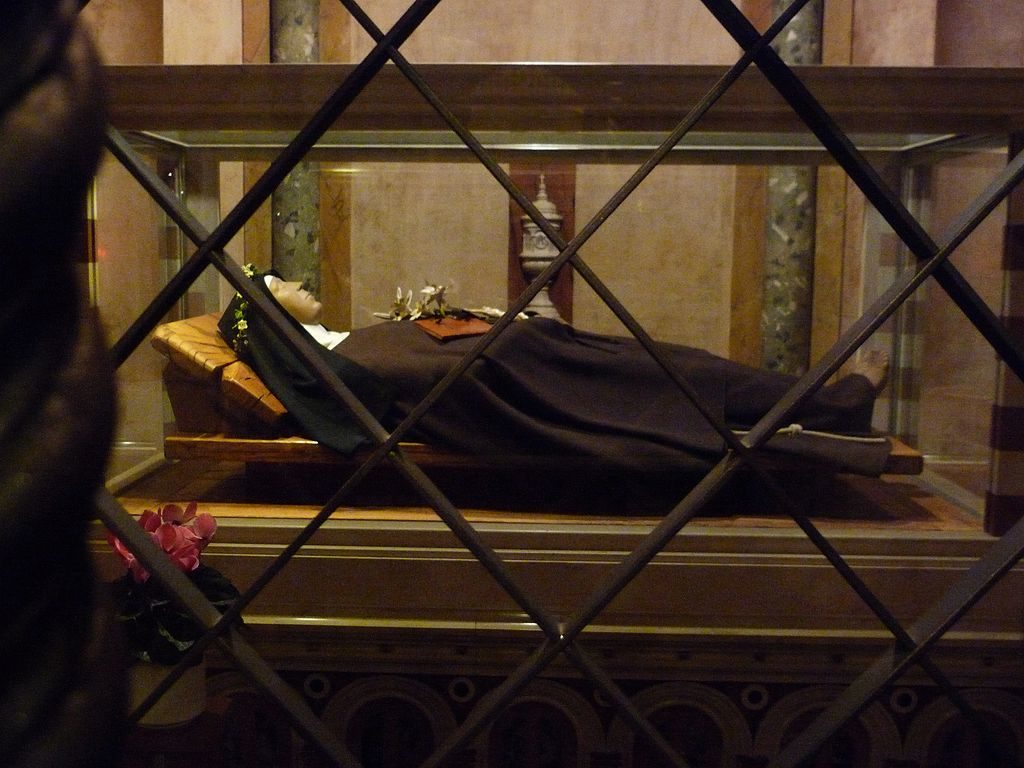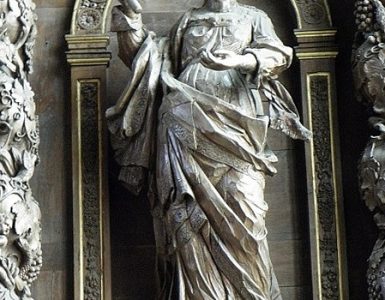For as long as I can remember, I have loved St. Francis and St. Clare. When we were planning a trip to Italy, I convinced my husband to make Assisi one of our stops. It was every bit as beautiful and peaceful as people describe.
But the greatest gift that I received from that trip was the
realization that the world of Francis and Clare was ordinary. It was that
ordinariness, imbued with profound love of God, that made it so extraordinary.
The Church that Francis Built

The old town of Assisi is up on a hill, but at the foot of the hill is the impressive Basilica of St. Mary of the Angels. As incredible as the basilica is, the real draw is a tiny, humble church building (Porziuncola) located in the center of the nave.
Roughly built of stone, it is the church that Francis re-built, when Christ famously spoke to him from the cross of San Damiano. If you walk around its walls, or reach out and touch the stone, it is stunning how ordinary it is. But people make pilgrimages from around the world, in order to see the work of Francis’s hands.
We visited Assisi not long after I had finished sewing a chasuble for my newly ordained priest friend, and I found myself thinking of how it felt to see my ordinary work being used for the sacred. As I reached out to touch the stones that Francis had touched, I found myself thinking of him doing this work with his hands. There was such dignity in this manual work that he did. It was ordinary labor, done with his ordinary hands, but lifted to the level of sacred by God’s grace at work in him.
And suddenly, I could see it clearly. Francis’s work, my work, your work — there is dignity in the work of our hands, when it is offered to God.
The Clothes of Francis and Clare
In the lower level of the Basilica of St. Francis of Assisi, there is a side chapel filled with his clothes. In a room to the left of St. Clare’s tomb in the Basilica of St. Clare, there is a similar room.
I stopped to gaze at both displays for a long time. The
realness of their clothes surprised me. Clare’s habit was simple and rough.
There was nothing extraordinary about it. The same was true of Francis’s habit,
which was heavily patched and mended. Their sandals were worn.
But these clothes were really worn by them. These ordinary, ordinary clothes were used daily by a real man and a real woman. It was a powerful reminder that these saints really lived — and they wore ordinary clothes, and ordinary sandals, just like you and me.
The Tombs and Lady Poverty
The most memorable part of Assisi was getting to visit the burial
places of the saints. It was surreal, kneeling before the tomb of Francis, who
is surrounded by the tombs of his friends.
I was looking forward to having the opportunity to kneel and
pray at the tomb of St. Clare. I handed my toddler to my husband and went to
kneel and pray. But as I prayed there, I could hear my little one fussing. She
was tired from traveling, and she was wanting me to hold her and nurse her. My
husband was trying to comfort her, but I could hear her crying as I prayed. I
cut my prayer time short to go and hold her.

And as I sat in the Basilica of St. Clare, feeling my little one’s body relax in my arms, I realized something. Clare and Francis embraced Lady Poverty. I looked down at my little girl, knowing that my greatest poverty as a mother of young ones is time (especially time to myself). And suddenly I realized — my youngest daughter is my Lady Poverty. In her littleness, her needs are constant. When we traveled around Italy, she quickly decided that she wanted Mommy — and only Mommy — to carry her every day. I loved having her along, but by the time we reached Assisi, I was feeling overwhelmed by the culture and by caring for a toddler in a different culture. But sitting mere feet away from the body of St. Clare, I received the grace to see that Christ had given me my own Lady Poverty to embrace and love — my vocation to marriage and motherhood. Gazing at my husband and youngest child as I prayed, I realized that my ordinary work was no less important than Clare’s. My Lady Poverty may look very different, but it is what God is calling me to embrace.
We all have a Lady Poverty that Christ is calling us to embrace. We all have fears and anxieties and comforts that we are reluctant to relinquish. But what if we gave them to Christ and embraced the poverty in our own lives — monetary, poverty of time, poverty of personal space, poverty of not being able to have children, poverty of loneliness, etc? What if that Lady Poverty were our means to sainthood?
Like Saints Francis and Clare, that is our call — sainthood in ordinariness.












